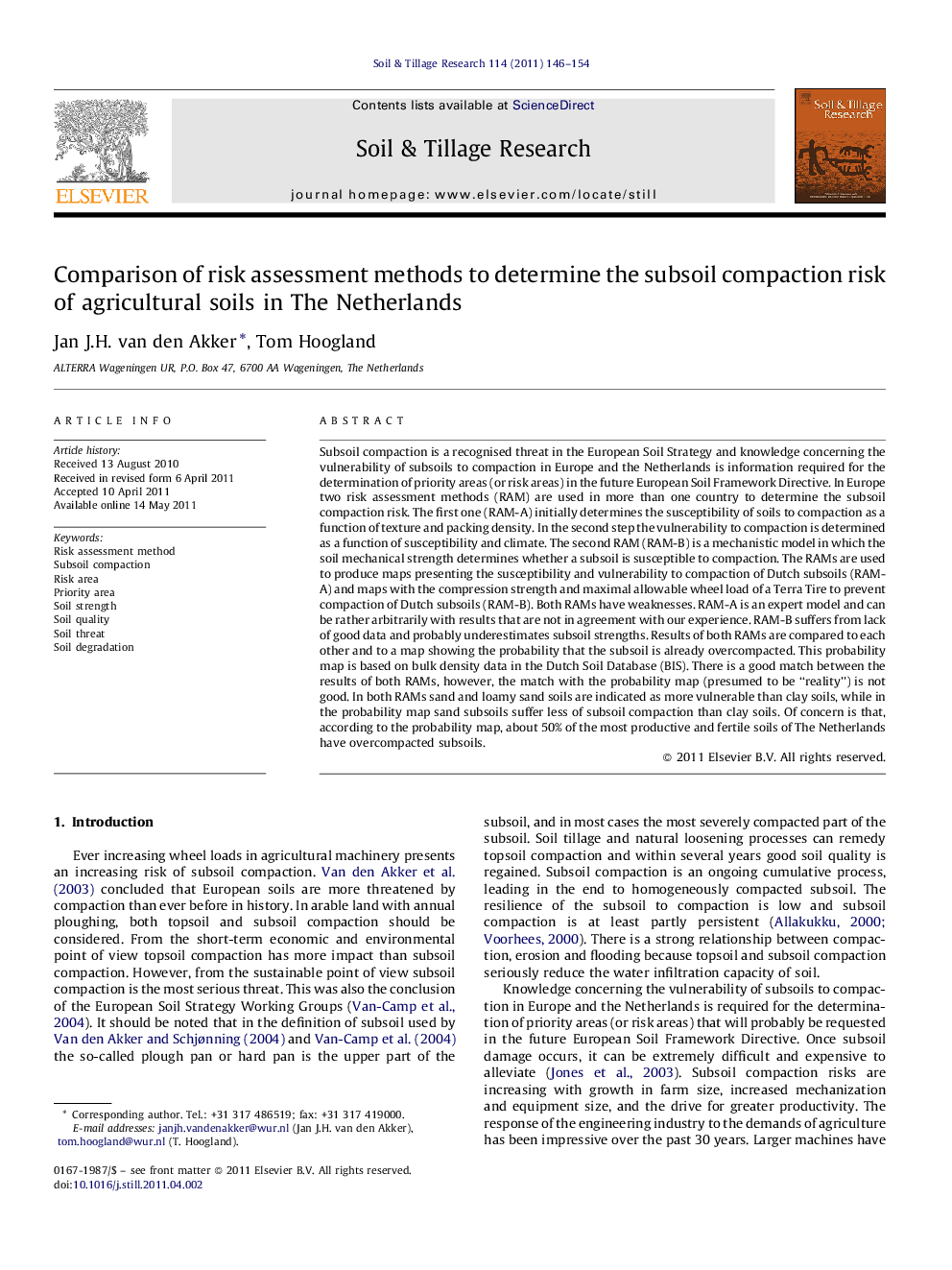| کد مقاله | کد نشریه | سال انتشار | مقاله انگلیسی | نسخه تمام متن |
|---|---|---|---|---|
| 306091 | 513071 | 2011 | 9 صفحه PDF | دانلود رایگان |

Subsoil compaction is a recognised threat in the European Soil Strategy and knowledge concerning the vulnerability of subsoils to compaction in Europe and the Netherlands is information required for the determination of priority areas (or risk areas) in the future European Soil Framework Directive. In Europe two risk assessment methods (RAM) are used in more than one country to determine the subsoil compaction risk. The first one (RAM-A) initially determines the susceptibility of soils to compaction as a function of texture and packing density. In the second step the vulnerability to compaction is determined as a function of susceptibility and climate. The second RAM (RAM-B) is a mechanistic model in which the soil mechanical strength determines whether a subsoil is susceptible to compaction. The RAMs are used to produce maps presenting the susceptibility and vulnerability to compaction of Dutch subsoils (RAM-A) and maps with the compression strength and maximal allowable wheel load of a Terra Tire to prevent compaction of Dutch subsoils (RAM-B). Both RAMs have weaknesses. RAM-A is an expert model and can be rather arbitrarily with results that are not in agreement with our experience. RAM-B suffers from lack of good data and probably underestimates subsoil strengths. Results of both RAMs are compared to each other and to a map showing the probability that the subsoil is already overcompacted. This probability map is based on bulk density data in the Dutch Soil Database (BIS). There is a good match between the results of both RAMs, however, the match with the probability map (presumed to be “reality”) is not good. In both RAMs sand and loamy sand soils are indicated as more vulnerable than clay soils, while in the probability map sand subsoils suffer less of subsoil compaction than clay soils. Of concern is that, according to the probability map, about 50% of the most productive and fertile soils of The Netherlands have overcompacted subsoils.
► Existing risk assessment methods (RAMs) to determine the vulnerability of agricultural soils to subsoil compaction are promising, however, require validation and improvement.
► RAMs and measurements show that subsoil compaction is a wide spread phenomenon in The Netherlands.
► 50% of the most productive and fertile soils of The Netherlands have overcompacted subsoils.
► Much more data on subsoil compaction, its effect on soil functions and resilience is needed.
Journal: Soil and Tillage Research - Volume 114, Issue 2, August 2011, Pages 146–154